Before Bleeding Heartland’s wildflower series goes on winter break, let’s revisit a late summer bloomer. Today’s featured plant is one of four native species in the Silphium branch of the aster family. (The others, which also have yellow composite flowers, are cup plant, compass plant, and rosinweed.)
Prairie dock (Silphium terebinthinaceum), sometimes known as prairie rosinweed, is among the tallest plants on the tallgrass prairie. The U.S. Department of Agriculture lists Iowa as part of its native range. My understanding is that while prairie dock is common throughout Illinois, it doesn’t really belong in most parts of Iowa. However, I’ve seen it in several Des Moines area prairie plantings, where it blooms in August and September.
According to the Illinois Wildflowers website, prairie dock tolerates drought and “rocky or gravelly soil” well. Though “rather slow to develop,” this “long-lived plant” is “very reliable and nearly indestructible when mature.”
The Illinois Wildflowers and Minnesota Wildflowers websites are good resources for botanically accurate descriptions of prairie dock foliage and flowerheads.
I have trouble distinguishing the large yellow flowerheads on some prairie plants. The easiest way to identify the Silphium species is to look at the leaves and stalks. Prairie dock has enormous base leaves and a mostly-bare flowering stalk.
Buds are starting to open on these plants:
The Minnesota Wildflowers site explains,
Flowers are 2 to 3 inches across with 15 to 30 yellow petals (ray flowers) that are fertile and have a split style protruding from the short tube at the base. The center disk is green until the disk flowers bloom […].
Disk flowers are starting to bloom in these pictures:
Closer looks at the flowerheads:
Prairie dock “has a tendency to topple over in a strong wind,” which explains why they sometimes appear to be growing sideways. I took this picture last year at one of the plantings near the southeast parking lot at Gray’s Lake in Des Moines:
You don’t need a lot of space on the ground to grow prairie dock. This plant is growing in back of the Annett Nature Center in Warren County.
Prairie dock plants may be only a few feet tall, but some reach a height of twelve feet. I didn’t have my camera with me, but my phone pictures of these prairie dock growing around Copper Creek in Pleasant Hill give you a sense of the height:
These are growing near the bike path that runs in front of the Greater Des Moines Botanical Garden:
Two shots of prairie dock with some kind of goldenrod in the background:

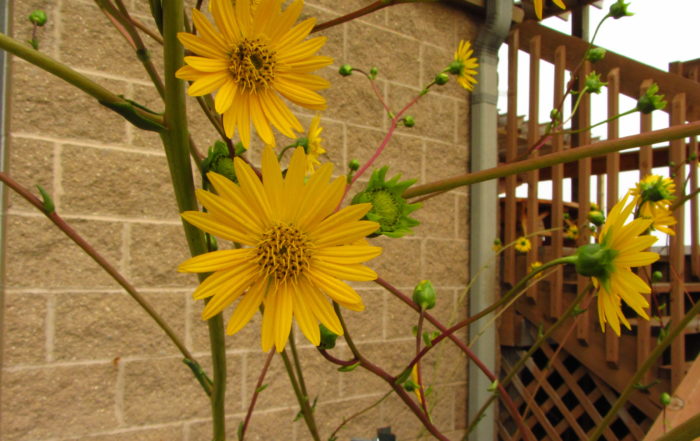
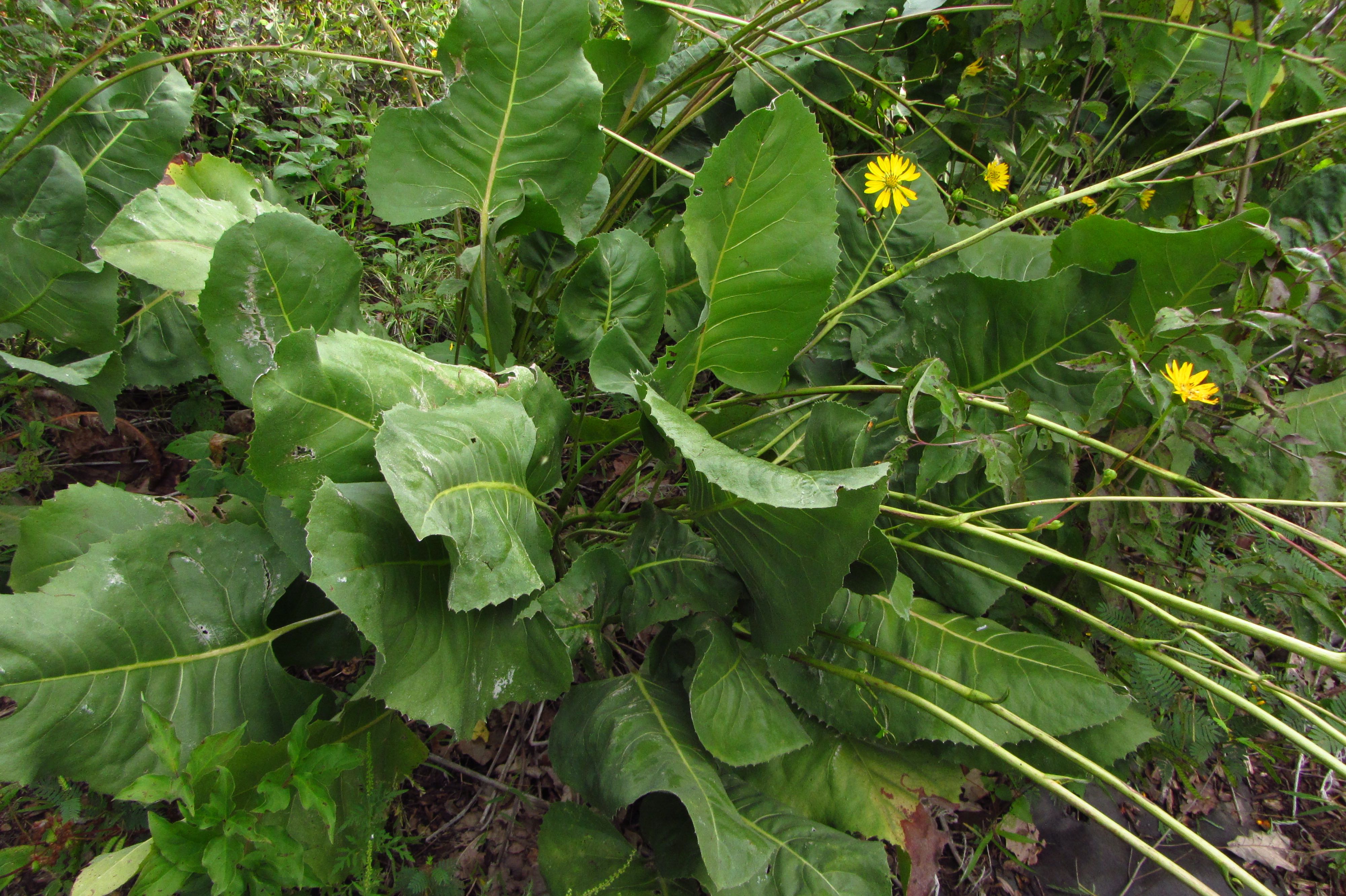
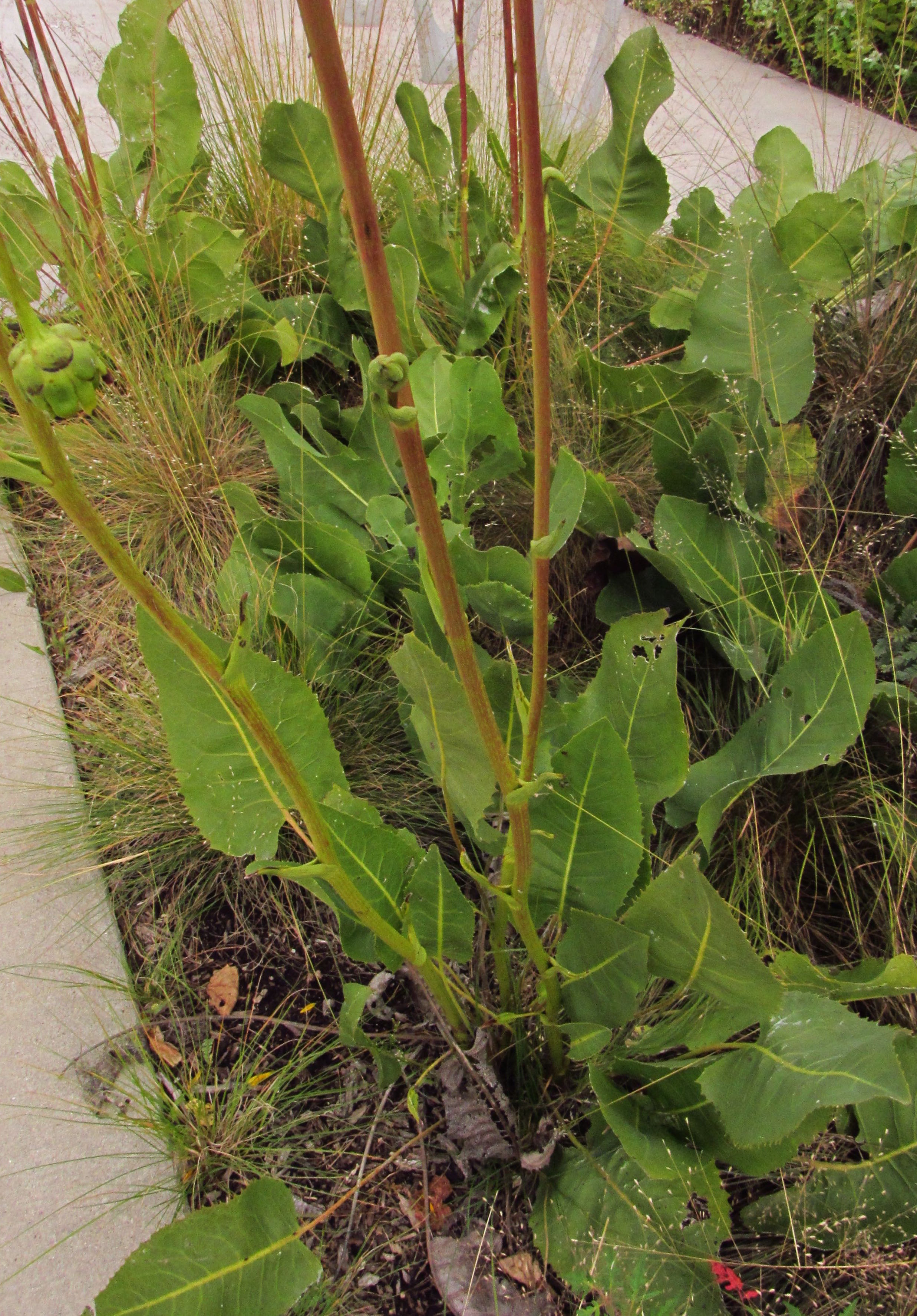
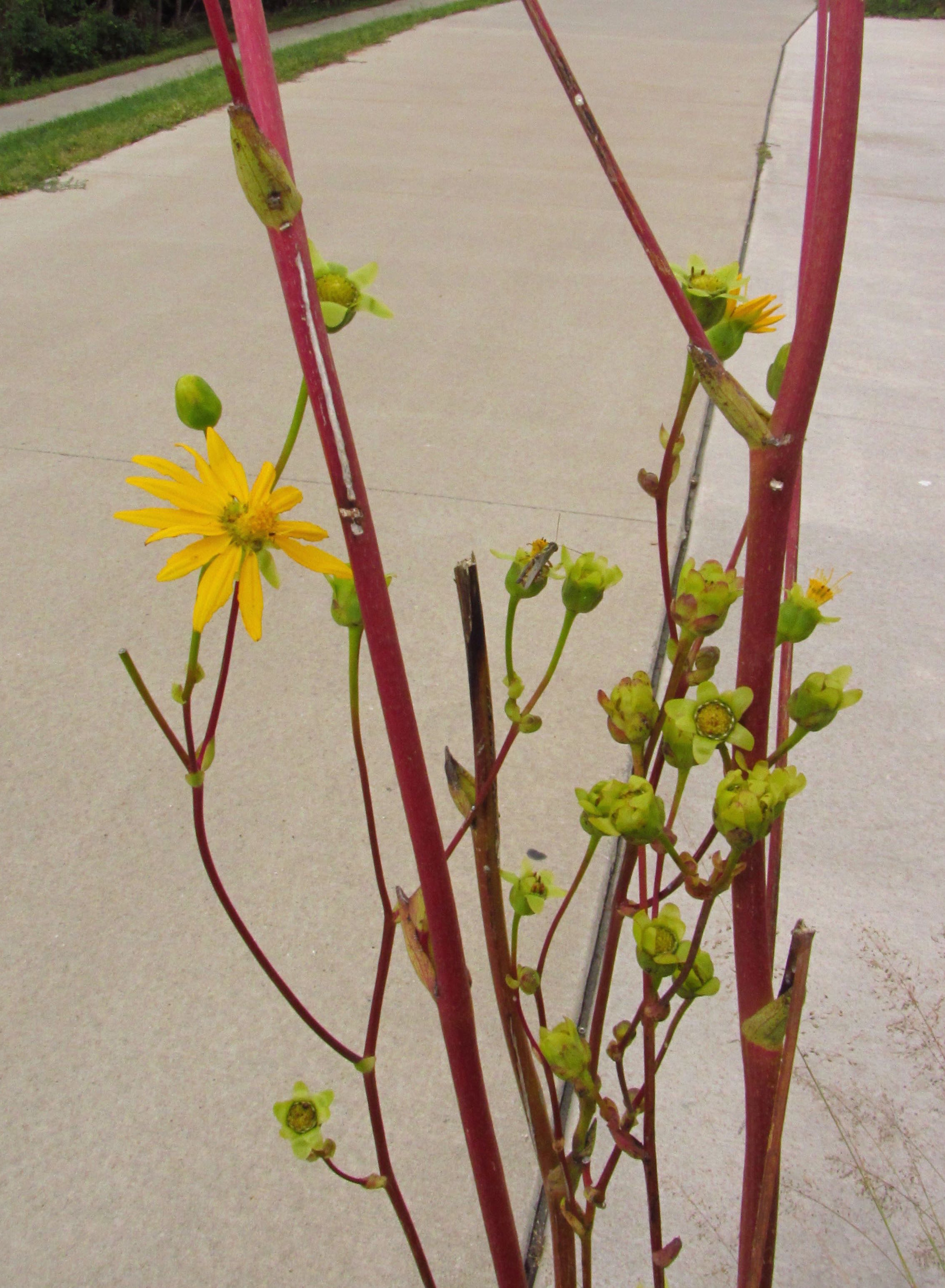
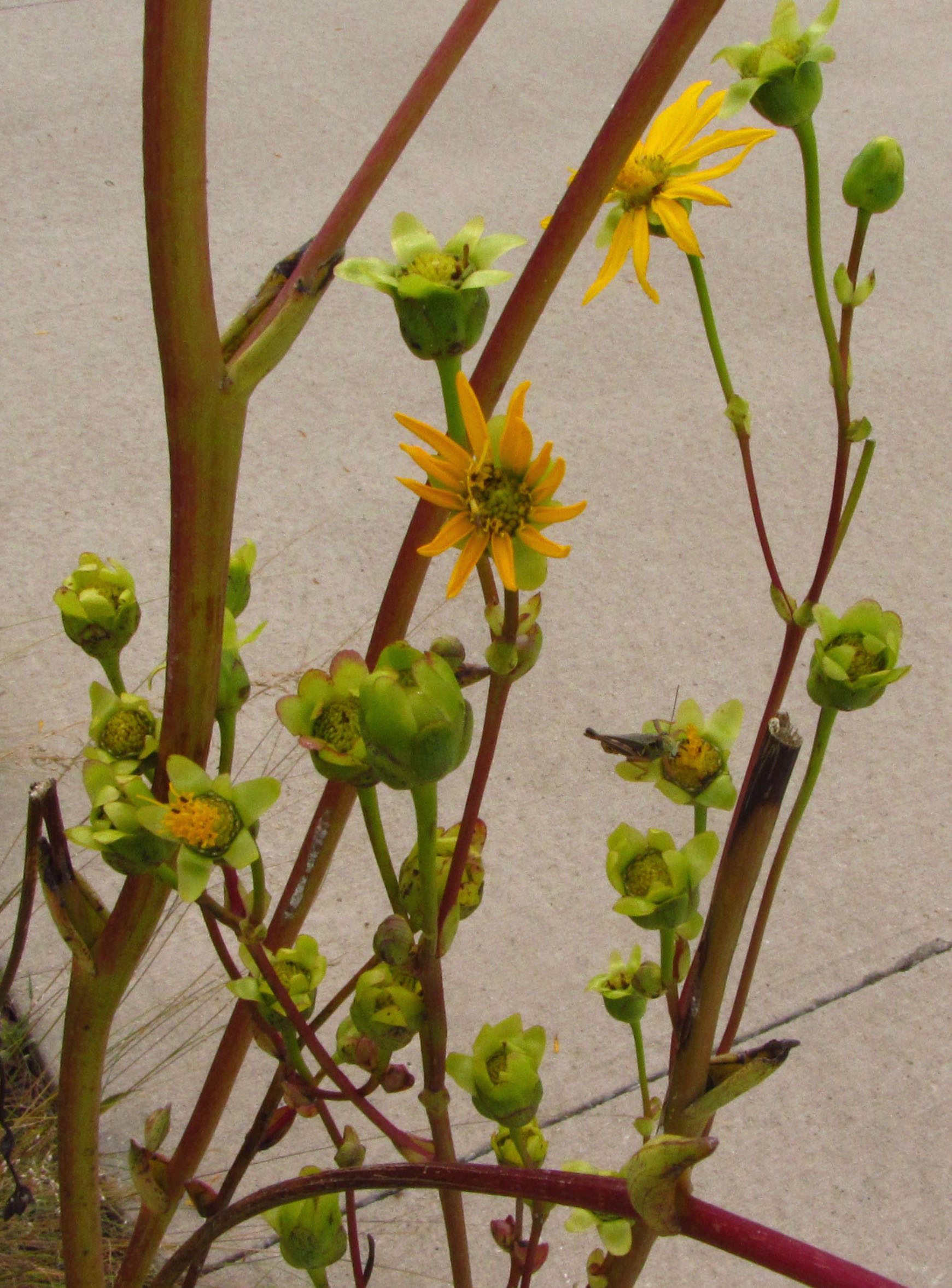
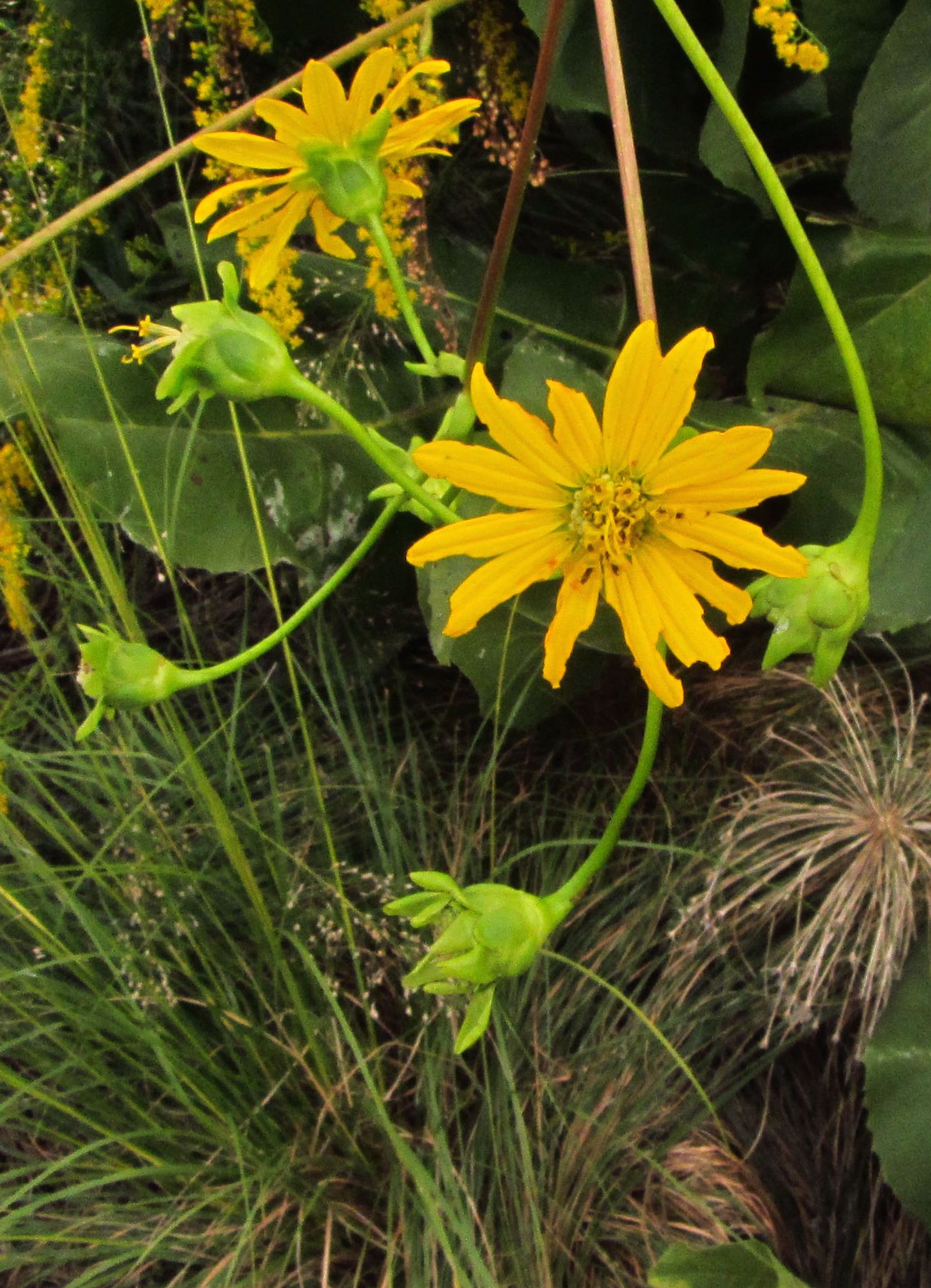
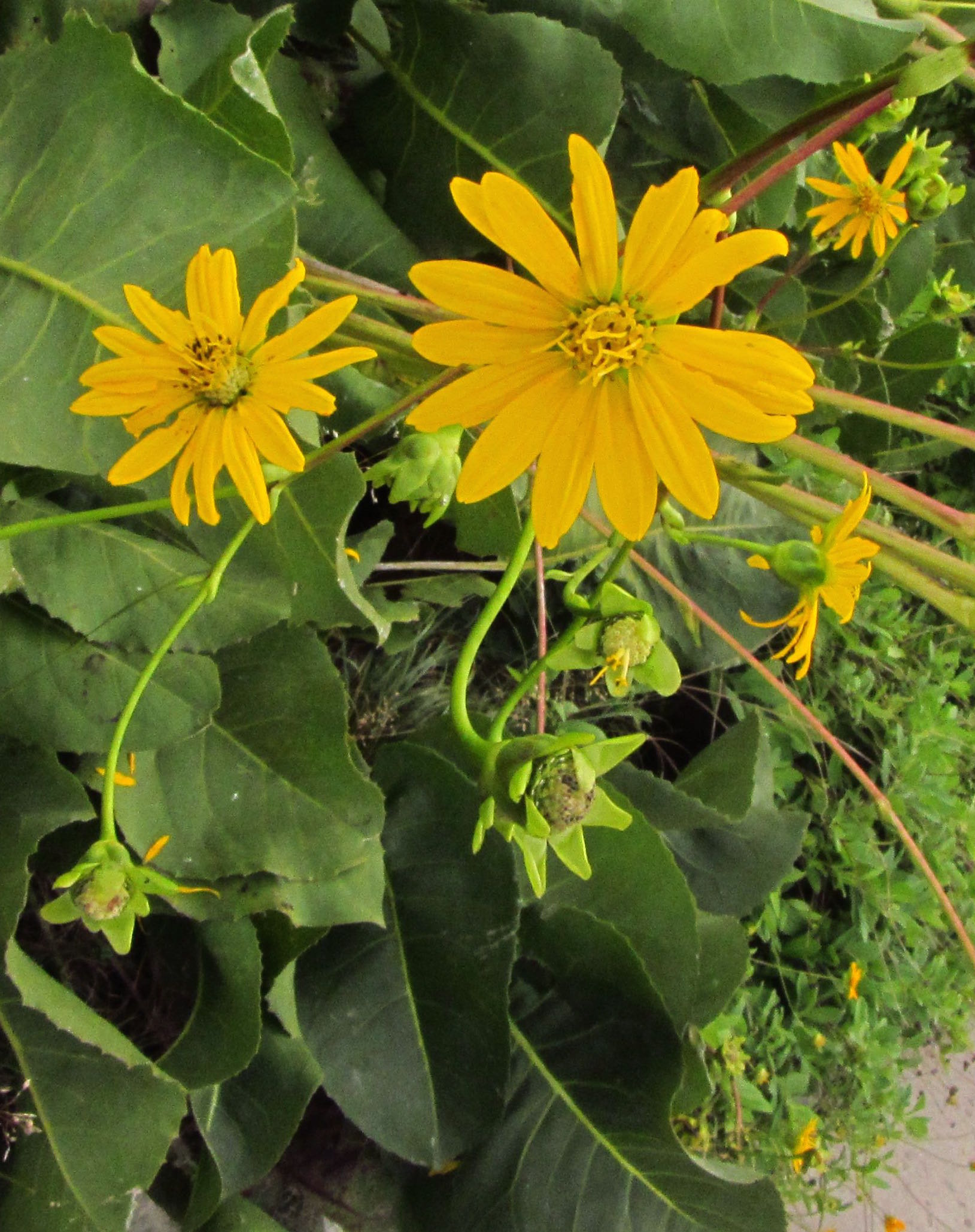
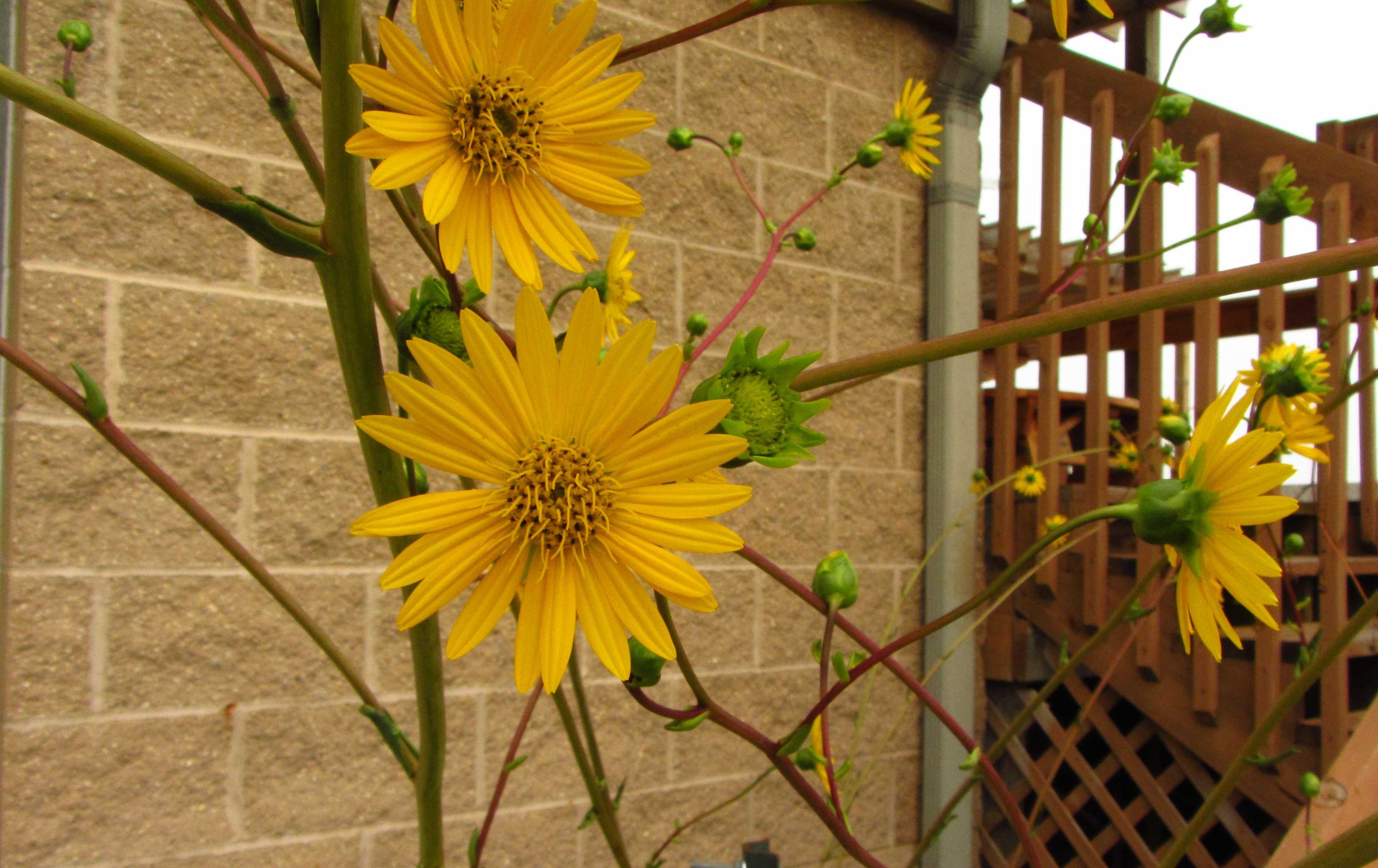
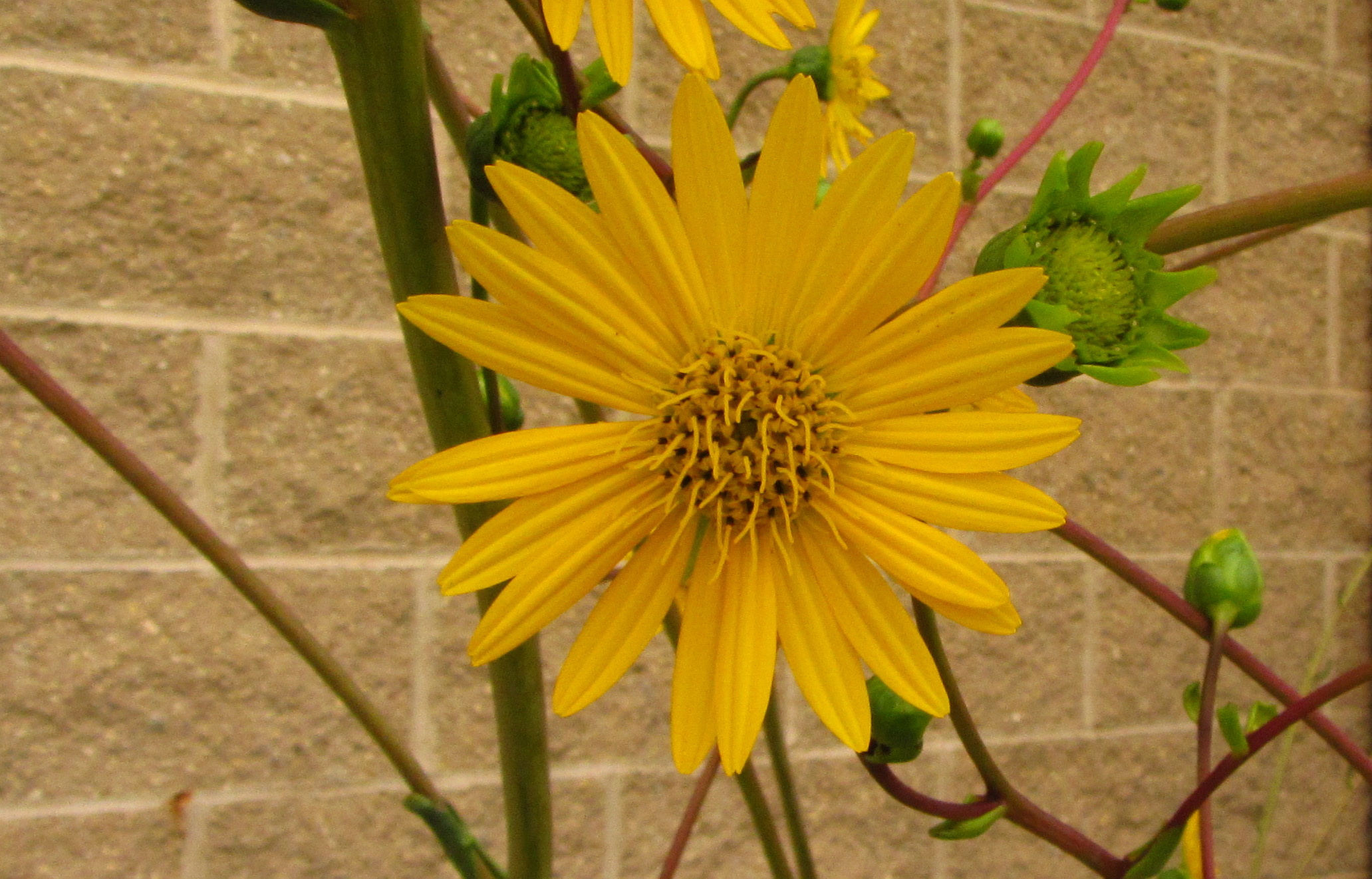
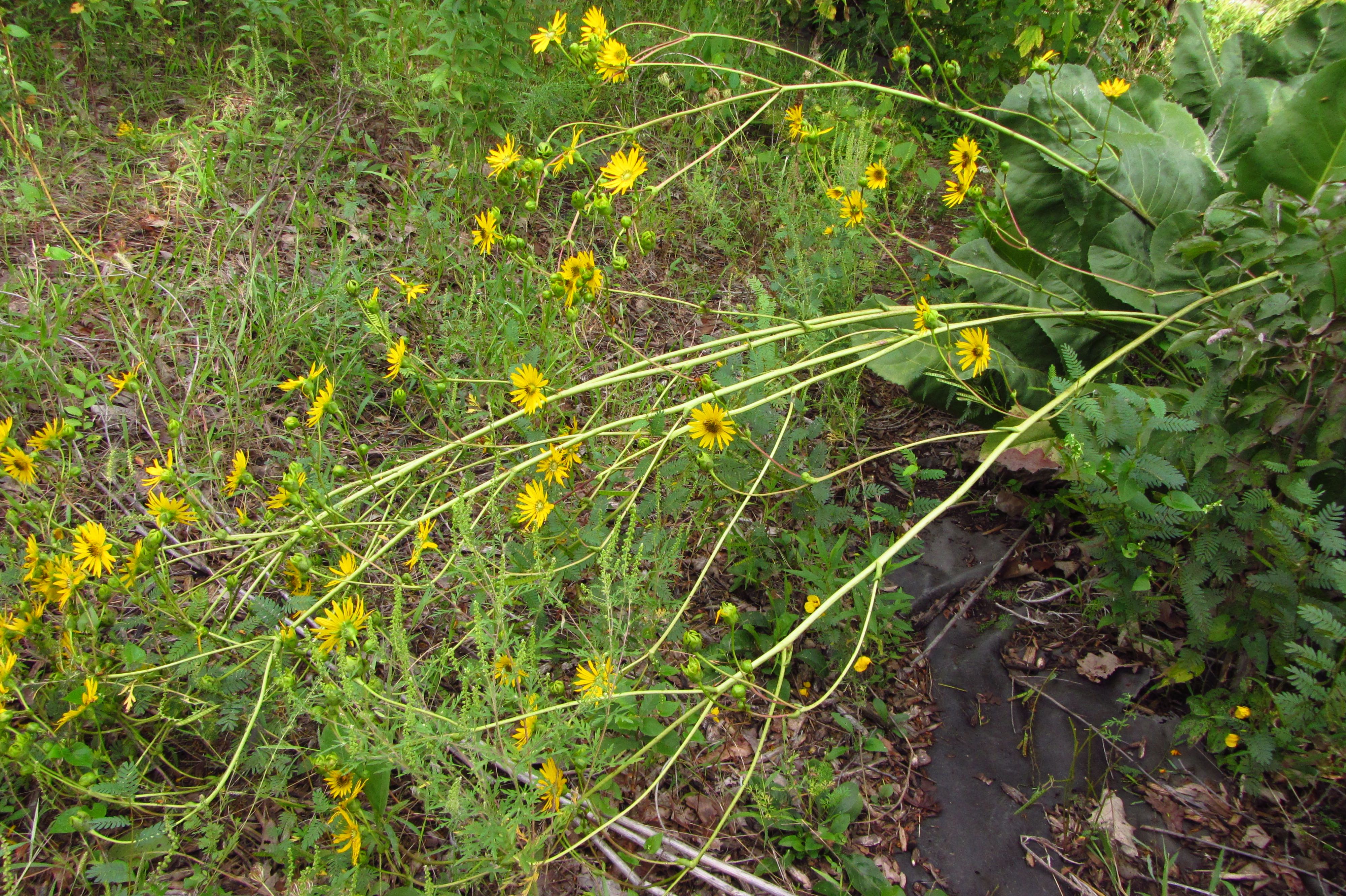
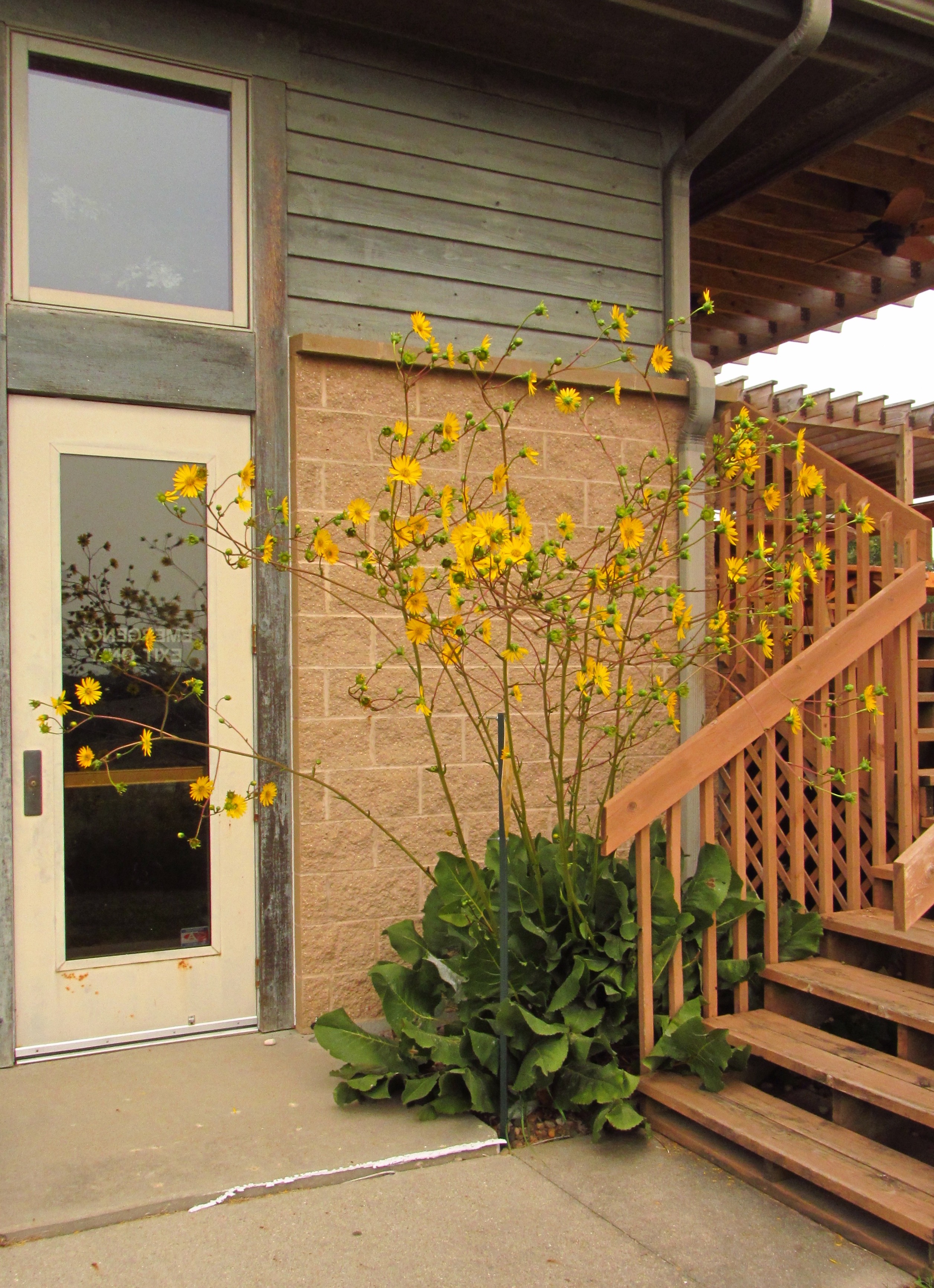
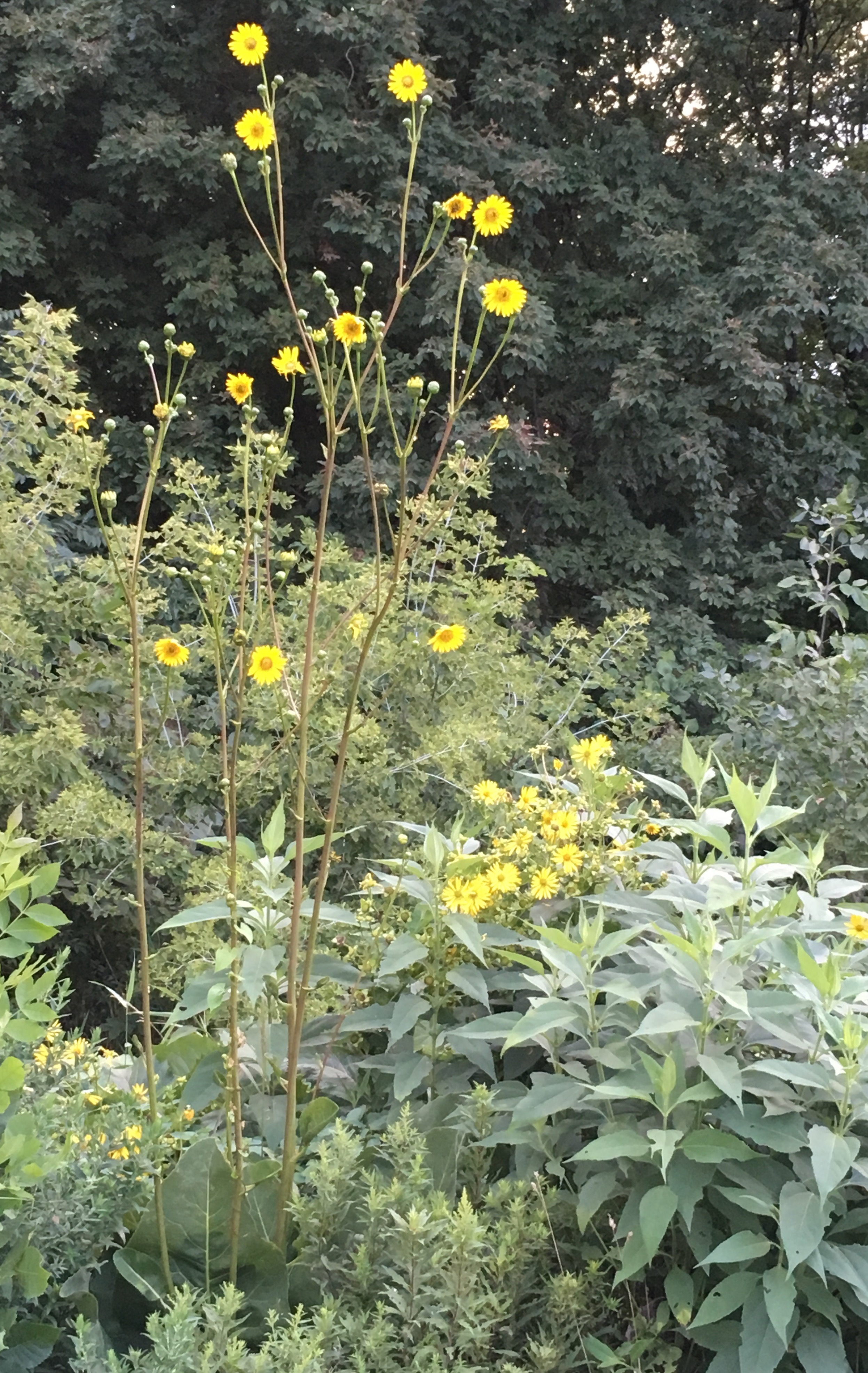
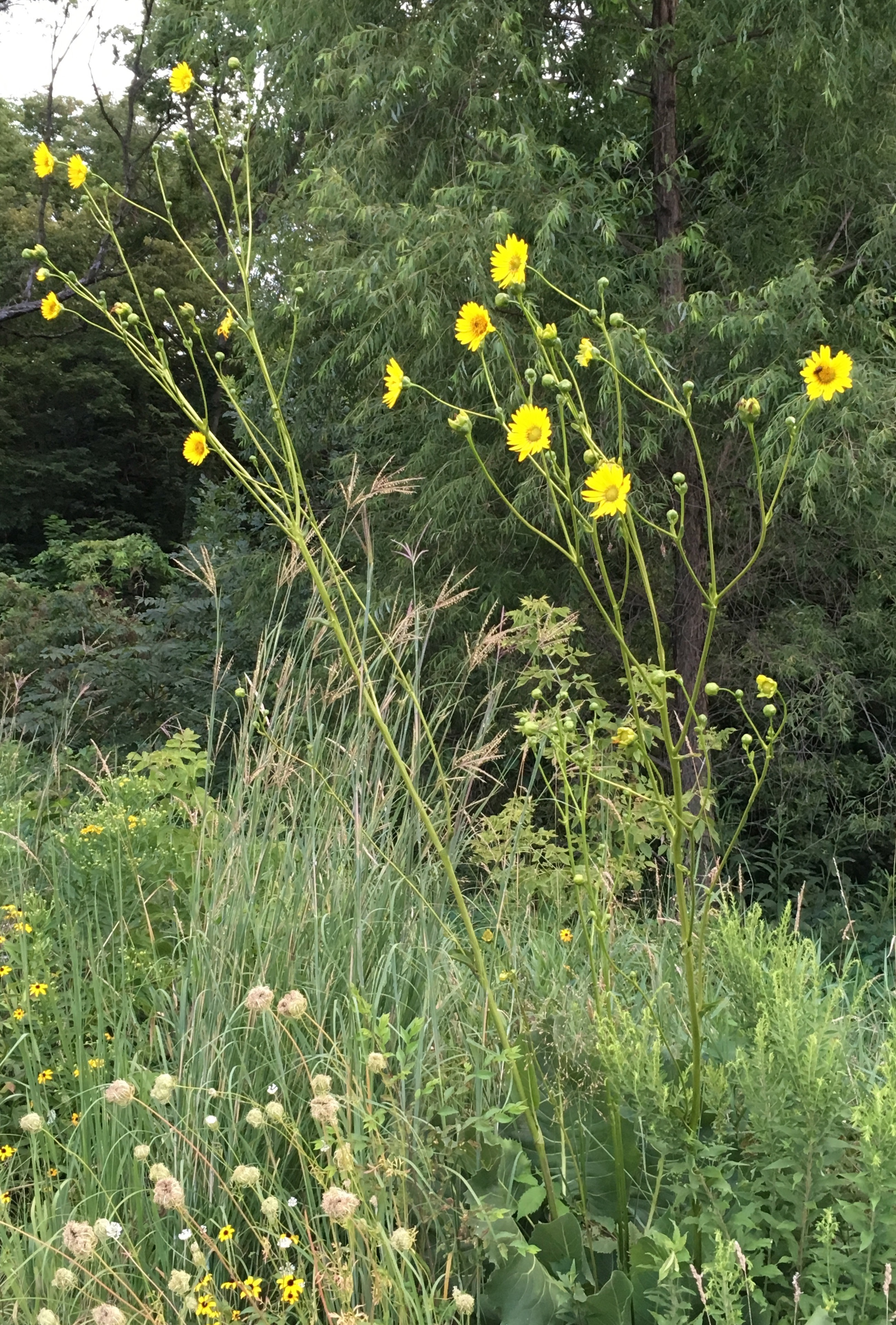
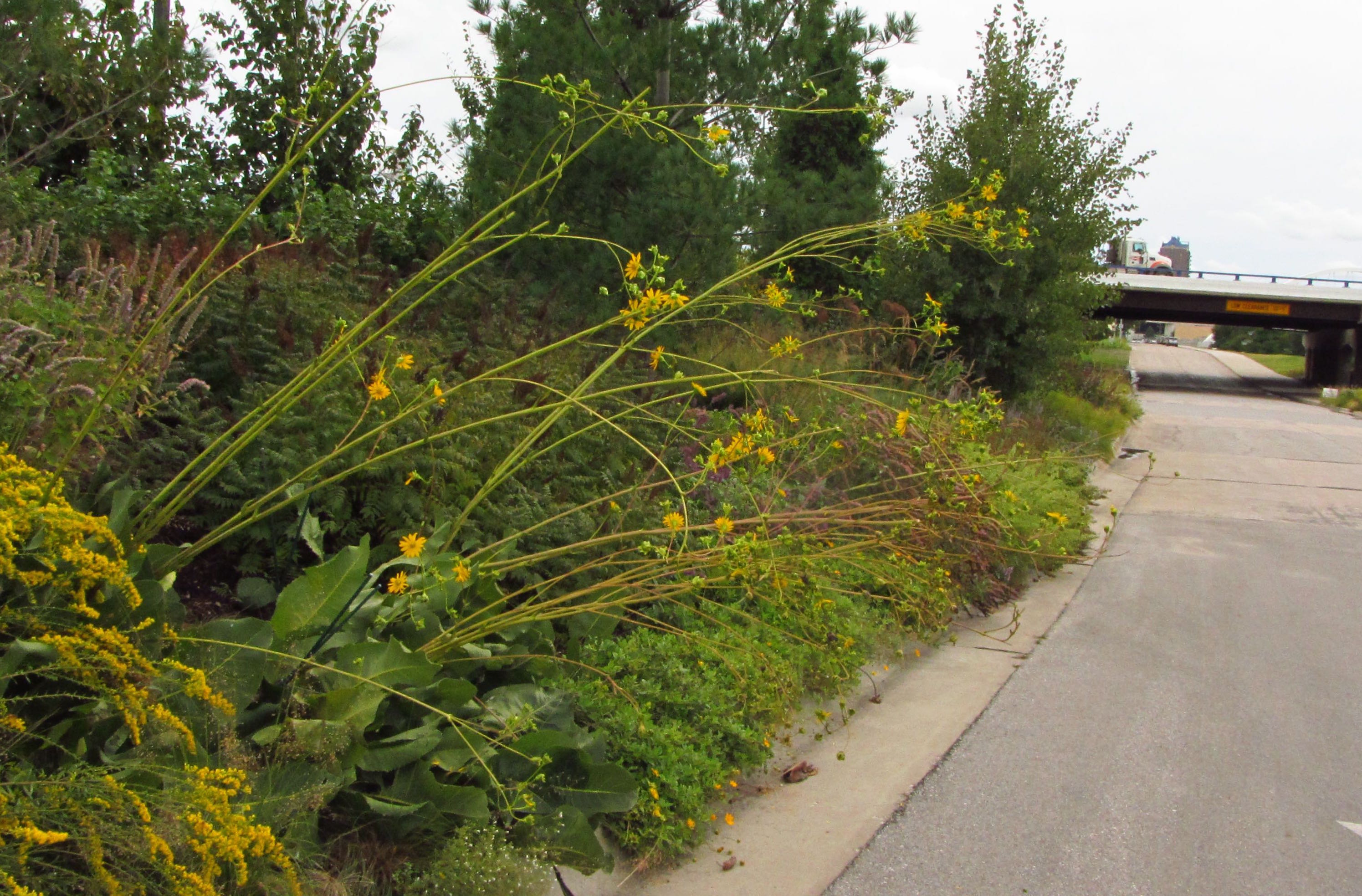
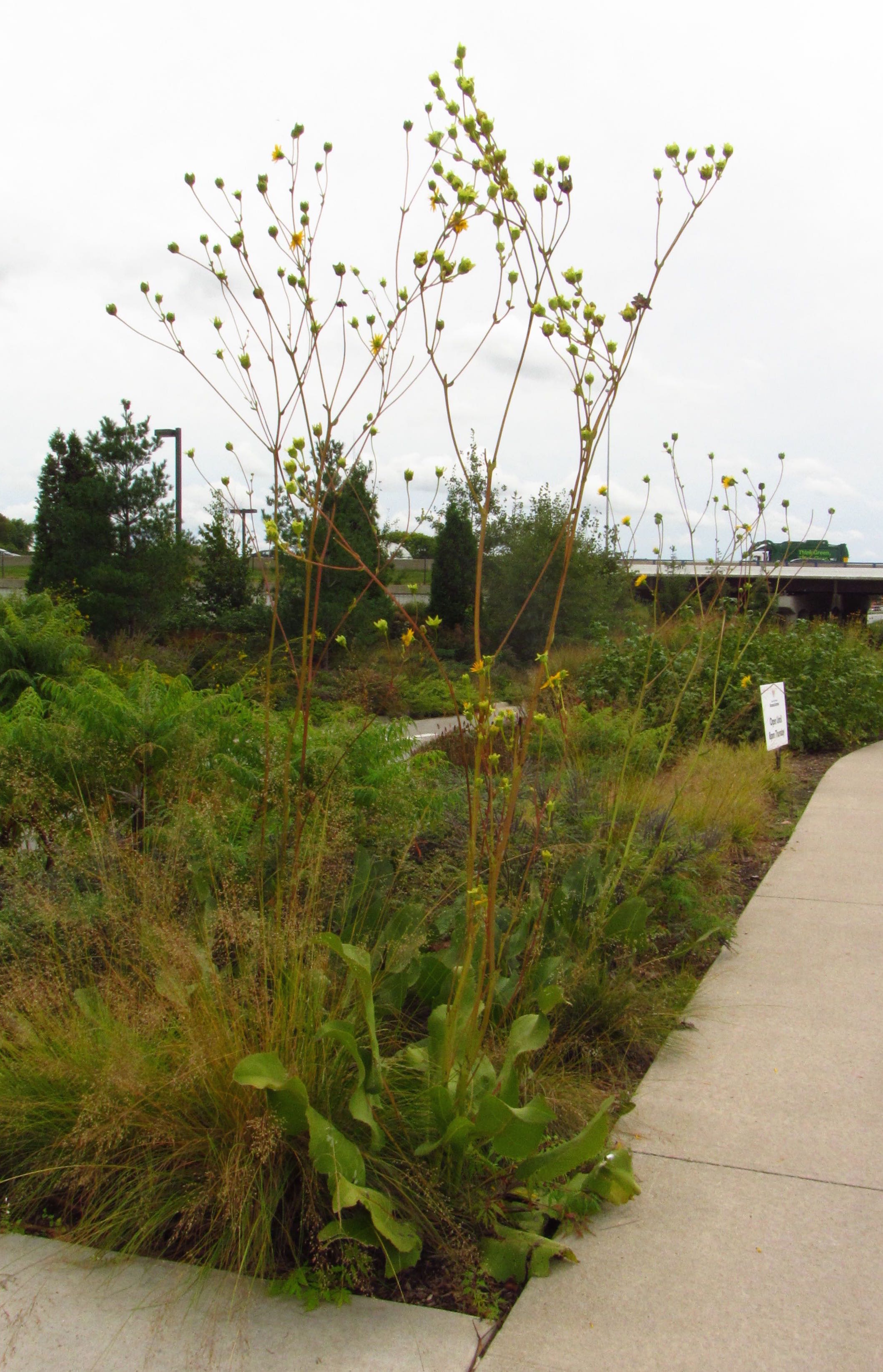
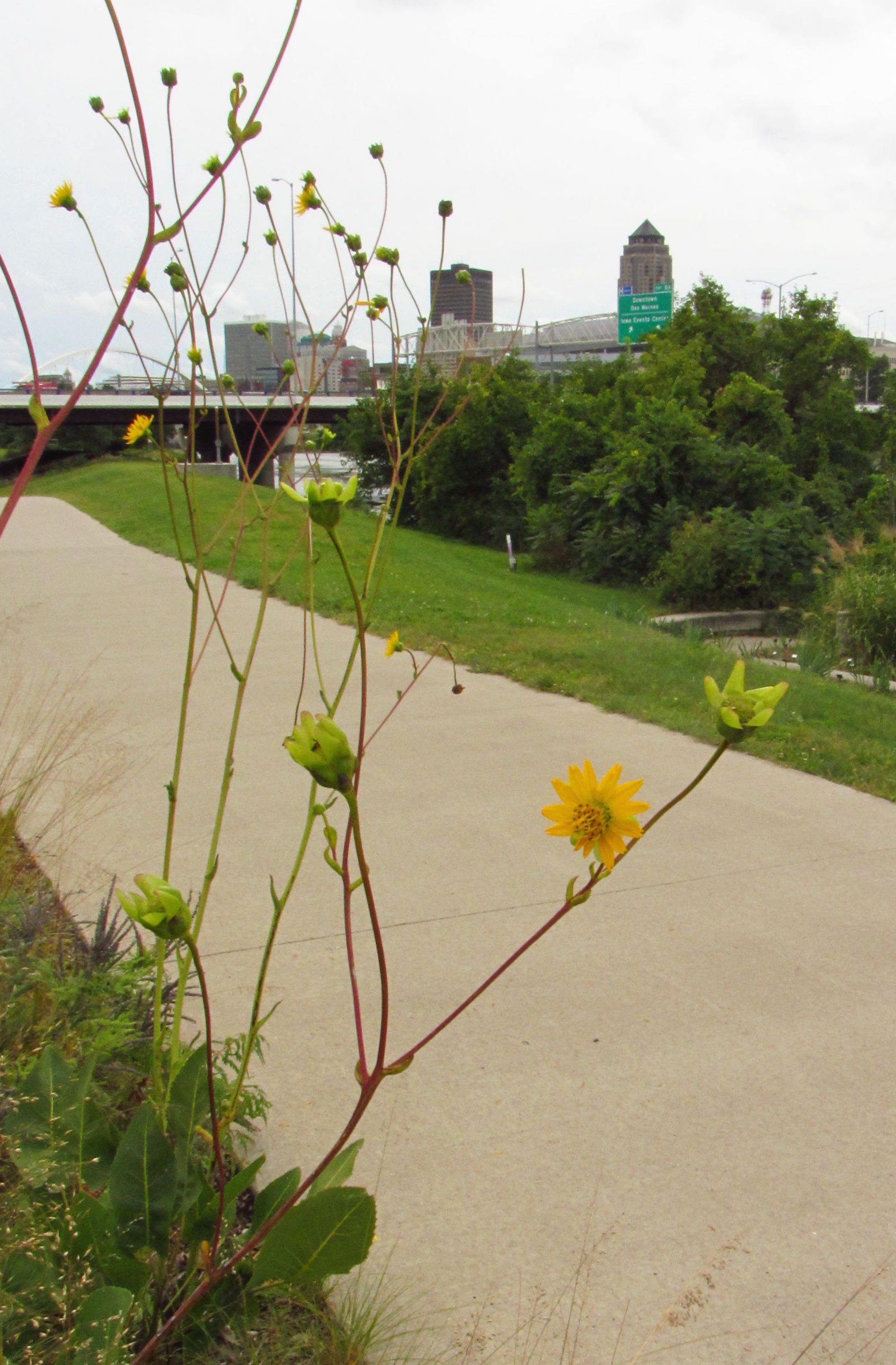
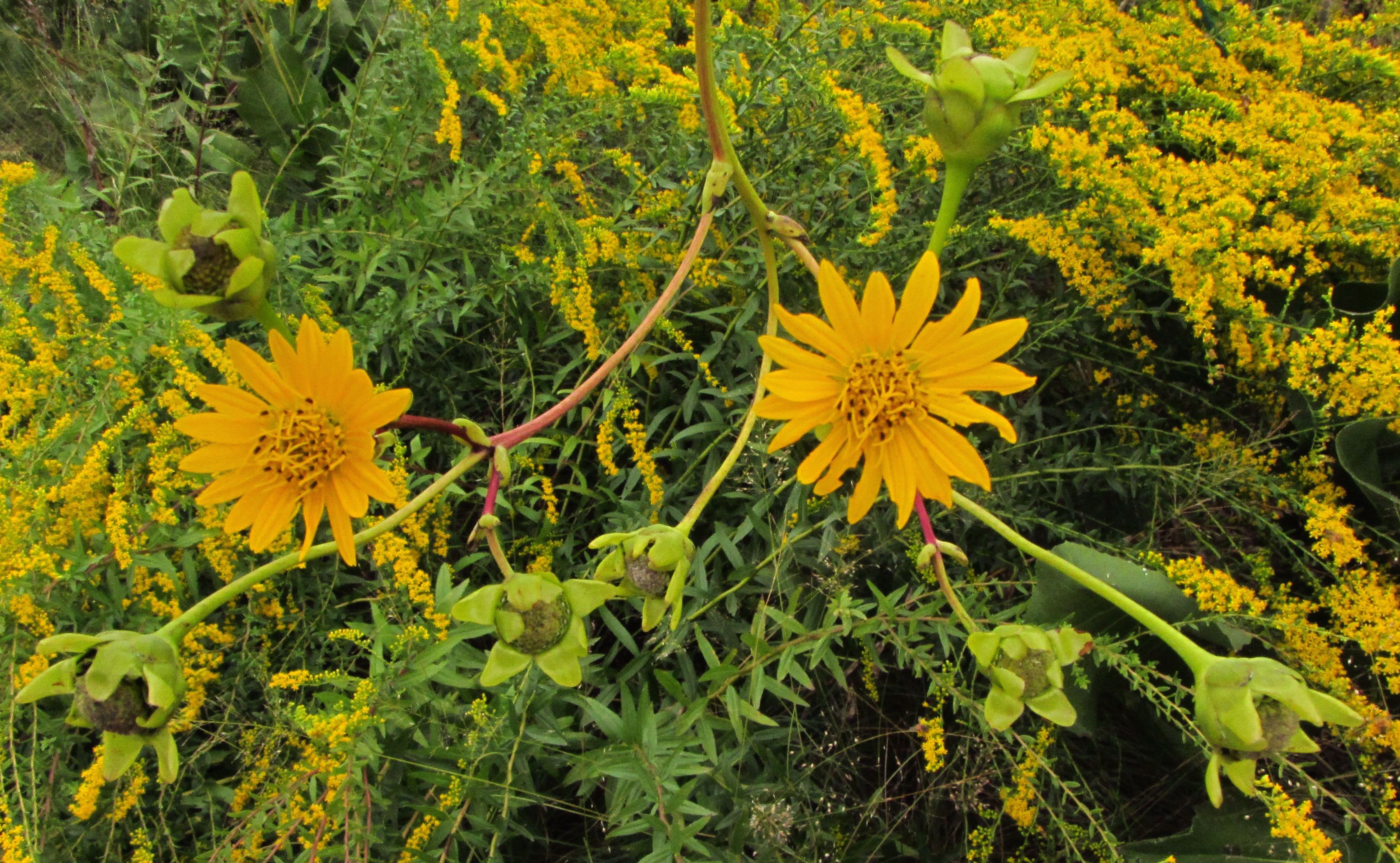
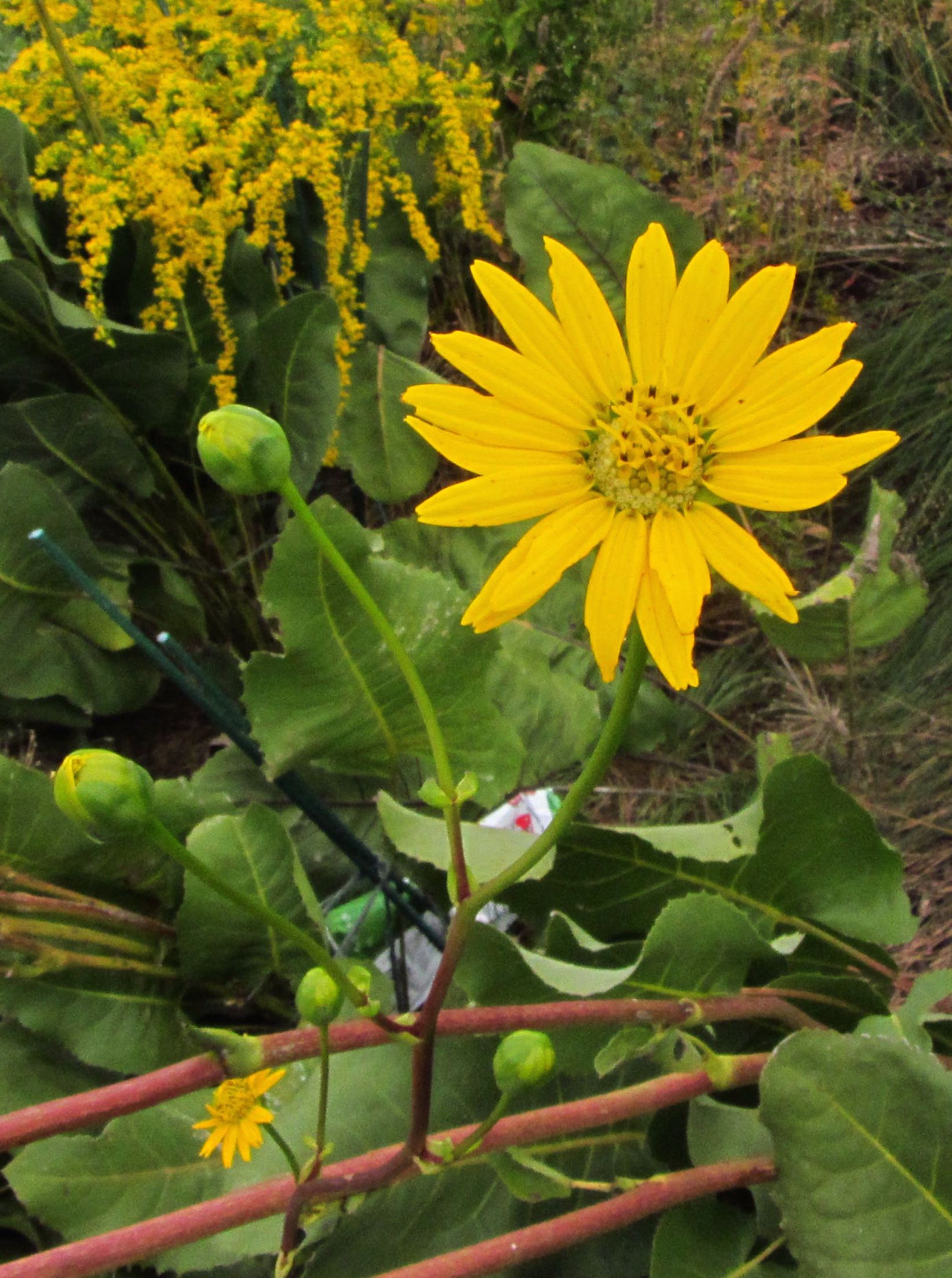
2 Comments
"Native"
Prairie dock is an example of how the term “native” can sometimes be confusing. Prairie dock is listed in many sources as native to Iowa, but more specifically, in the sources I’ve checked, it is native to only two or three eastern counties.
If someone is planning a prairie garden and wants to include a variety of prairie flowers that are native to the upper Midwest, prairie dock is an attractive option, and it attracts some pollinators. However, if the planner’s purpose is to plant a prairie reconstruction in Central Iowa that resembles, to the extent possible, an original Central Iowa prairie, prairie dock is not an appropriate choice.
PrairieFan Wed 15 Nov 10:41 PM
I love winter...
…but the beginning of another year of Iowa Wildflower Wednesday is a good reason to look forward to spring.
PrairieFan Tue 21 Nov 7:39 PM